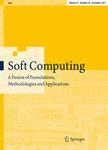版权所有:内蒙古大学图书馆 技术提供:维普资讯• 智图
内蒙古自治区呼和浩特市赛罕区大学西街235号 邮编: 010021

作者机构:Univ Tunis High Inst Management Tunis ISGT SOIE Lab Tunis Tunisia
出 版 物:《SOFT COMPUTING》 (Soft Comput.)
年 卷 期:2011年第15卷第9期
页 面:1807-1823页
核心收录:
学科分类:08[工学] 0812[工学-计算机科学与技术(可授工学、理学学位)]
主 题:Multi-objective optimization Evolutionary algorithms Knee regions Decision making
摘 要:Evolutionary Algorithms (EAs) have been recognized to be well suited to approximate the Pareto front of Multi-objective Optimization Problems (MOPs). In reality, the Decision Maker (DM) is not interested in discovering the whole Pareto front rather than finding only the portion(s) of the front that matches at most his/her preferences. Recently, several studies have addressed the decision-making task to assist the DM in choosing the final alternative. Knee regions are potential parts of the Pareto front presenting the maximal trade-offs between objectives. Solutions residing in knee regions are characterized by the fact that a small improvement in either objective will cause a large deterioration in at least another one which makes moving in either direction not attractive. Thus, in the absence of explicit DM s preferences, we suppose that knee regions represent the DM s preferences themselves. Recently, few works were proposed to find knee regions. This paper represents a further study in this direction. Hence, we propose a new evolutionary method, denoted TKR-NSGA-II, to discover knee regions of the Pareto front. In this method, the population is guided gradually by means of a set of mobile reference points. Since the reference points are updated based on trade-off information, the population converges towards knee region centers which allows the construction of a neighborhood of solutions in each knee. The performance assessment of the proposed algorithm is done on two- and three-objective knee-based test problems. The obtained results show the ability of the algorithm to: (1) find the Pareto optimal knee regions, (2) control the extent (We mean by extent the breadth/spread of the obtained knee region.) of the obtained regions independently of the geometry of the front and (3) provide competitive and better results when compared to other recently proposed methods. Moreover, we propose an interactive version of TKR-NSGA-II which is useful when the DM has no a prior